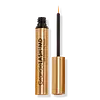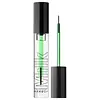What's inside
What's inside
 Key Ingredients
Key Ingredients

 Benefits
Benefits

 Concerns
Concerns

 Ingredients Side-by-side
Ingredients Side-by-side

Water
Skin ConditioningPanthenol
Skin ConditioningGlycerin
HumectantSodium Citrate
BufferingLeuconostoc/Radish Root Ferment Filtrate
AntimicrobialAlanine
MaskingAlcohol
AntimicrobialAloe Barbadensis Leaf Juice
Skin ConditioningArctostaphylos Uva Ursi Leaf Extract
Skin ConditioningArginine
MaskingAspartic Acid
MaskingCalcium Gluconate
HumectantCaprylyl Glycol
EmollientChamomilla Recutita Flower Extract
MaskingEthylhexylglycerin
Skin ConditioningGluconolactone
Skin ConditioningGlycine
BufferingHexylene Glycol
EmulsifyingHistidine
HumectantHoney Extract
HumectantHydrolyzed Glycosaminoglycans
HumectantHydrolyzed Yeast Extract
Skin ConditioningHydroxyethylcellulose
Emulsion StabilisingIsoleucine
Skin ConditioningIsopropyl Cloprostenate
Magnesium Ascorbyl Phosphate
AntioxidantPanax Ginseng Root Extract
EmollientPCA
HumectantPhenylalanine
MaskingPolysorbate 20
EmulsifyingProline
Skin ConditioningPropylene Glycol
HumectantSerine
MaskingSodium Hyaluronate
HumectantSodium Lactate
BufferingSodium PCA
HumectantThreonine
Tocopheryl Acetate
AntioxidantTriethanolamine
BufferingTussilago Farfara Leaf Extract
AstringentValine
MaskingVitis Vinifera Seed Extract
AntimicrobialPhenoxyethanol
PreservativeSodium Benzoate
MaskingSodium Metabisulfite
AntioxidantWater, Panthenol, Glycerin, Sodium Citrate, Leuconostoc/Radish Root Ferment Filtrate, Alanine, Alcohol, Aloe Barbadensis Leaf Juice, Arctostaphylos Uva Ursi Leaf Extract, Arginine, Aspartic Acid, Calcium Gluconate, Caprylyl Glycol, Chamomilla Recutita Flower Extract, Ethylhexylglycerin, Gluconolactone, Glycine, Hexylene Glycol, Histidine, Honey Extract, Hydrolyzed Glycosaminoglycans, Hydrolyzed Yeast Extract, Hydroxyethylcellulose, Isoleucine, Isopropyl Cloprostenate, Magnesium Ascorbyl Phosphate, Panax Ginseng Root Extract, PCA, Phenylalanine, Polysorbate 20, Proline, Propylene Glycol, Serine, Sodium Hyaluronate, Sodium Lactate, Sodium PCA, Threonine, Tocopheryl Acetate, Triethanolamine, Tussilago Farfara Leaf Extract, Valine, Vitis Vinifera Seed Extract, Phenoxyethanol, Sodium Benzoate, Sodium Metabisulfite
Water
Skin ConditioningGlycerin
HumectantButylene Glycol
HumectantPolysorbate 20
EmulsifyingCannabis Sativa Seed Extract
EmollientHydroxyethylcellulose
Emulsion StabilisingPhenoxyethanol
PreservativeCaprylyl Glycol
EmollientChlorphenesin
AntimicrobialPapaver Somniferum Seed Extract
Skin ConditioningAloe Barbadensis Leaf Juice
Skin Conditioning1,2-Hexanediol
Skin ConditioningHydrolyzed Quinoa
Skin ConditioningSodium Hydroxide
BufferingPanthenol
Skin ConditioningSodium Benzoate
MaskingMyristoyl Pentapeptide-17
Skin ConditioningBenzoic Acid
MaskingPotassium Sorbate
PreservativeBiotinoyl Tripeptide-1
Oligopeptide-2
Skin ConditioningNicotiana Benthamiana Hexapeptide-40 Sh-Polypeptide-9
Nicotiana Benthamiana Hexapeptide-40 Sh-Polypeptide-86
Citric Acid
BufferingWater, Glycerin, Butylene Glycol, Polysorbate 20, Cannabis Sativa Seed Extract, Hydroxyethylcellulose, Phenoxyethanol, Caprylyl Glycol, Chlorphenesin, Papaver Somniferum Seed Extract, Aloe Barbadensis Leaf Juice, 1,2-Hexanediol, Hydrolyzed Quinoa, Sodium Hydroxide, Panthenol, Sodium Benzoate, Myristoyl Pentapeptide-17, Benzoic Acid, Potassium Sorbate, Biotinoyl Tripeptide-1, Oligopeptide-2, Nicotiana Benthamiana Hexapeptide-40 Sh-Polypeptide-9, Nicotiana Benthamiana Hexapeptide-40 Sh-Polypeptide-86, Citric Acid
 Reviews
Reviews

Ingredients Explained
These ingredients are found in both products.
Ingredients higher up in an ingredient list are typically present in a larger amount.
Aloe Barbadensis Leaf Juice comes from leaves of the aloe plant. Aloe Barbadensis Leaf Juice is best known for helping to soothe sunburns. It is also anti-inflammatory, moisturizing, antiseptic, and can help heal wounds.
Aloe is packed with good stuff including Vitamins A, C, and E. These vitamins are antioxidants, which help fight free-radicals and the damage they may cause. Free-radicals are molecules that may damage your skin cells, such as pollution.
Aloe Barbadensis Leaf Juice also contains sugars. These sugars come in the form of monosaccharides and polysaccharides, folic acid, and choline. These sugars are able to help bind moisture to skin.
It also contains minerals such as calcium, 12 anthraquinones, fatty acids, amino acids, and Vitamin B12.
Learn more about Aloe Barbadensis Leaf JuiceCaprylyl Glycol is a humectant and emollient, meaning it attracts and preserves moisture.
It is a common ingredient in many products, especially those designed to hydrate skin. The primary benefits are retaining moisture, skin softening, and promoting a healthy skin barrier.
Though Caprylyl Glycol is an alcohol derived from fatty acids, it is not the kind that can dry out skin.
This ingredient is also used as a preservative to extend the life of products. It has slight antimicrobial properties.
Learn more about Caprylyl GlycolGlycerin is already naturally found in your skin. It helps moisturize and protect your skin.
A study from 2016 found glycerin to be more effective as a humectant than AHAs and hyaluronic acid.
As a humectant, it helps the skin stay hydrated by pulling moisture to your skin. The low molecular weight of glycerin allows it to pull moisture into the deeper layers of your skin.
Hydrated skin improves your skin barrier; Your skin barrier helps protect against irritants and bacteria.
Glycerin has also been found to have antimicrobial and antiviral properties. Due to these properties, glycerin is often used in wound and burn treatments.
In cosmetics, glycerin is usually derived from plants such as soybean or palm. However, it can also be sourced from animals, such as tallow or animal fat.
This ingredient is organic, colorless, odorless, and non-toxic.
Glycerin is the name for this ingredient in American English. British English uses Glycerol/Glycerine.
Learn more about GlycerinHydroxyethylcellulose is used to improve the texture of products. It is created from a chemical reaction involving ethylene oxide and alkali-cellulose. Cellulose is a sugar found in plant cell walls and help give plants structure.
This ingredient helps stabilize products by preventing ingredients from separating. It can also help thicken the texture of a product.
This ingredient can also be found in pill medicines to help our bodies digest other ingredients.
Learn more about HydroxyethylcellulosePanthenol is a common ingredient that helps hydrate and soothe the skin. It is found naturally in our skin and hair.
There are two forms of panthenol: D and L.
D-panthenol is also known as dexpanthenol. Most cosmetics use dexpanthenol or a mixture of D and L-panthenol.
Panthenol is famous due to its ability to go deeper into the skin's layers. Using this ingredient has numerous pros (and no cons):
Like hyaluronic acid, panthenol is a humectant. Humectants are able to bind and hold large amounts of water to keep skin hydrated.
This ingredient works well for wound healing. It works by increasing tissue in the wound and helps close open wounds.
Once oxidized, panthenol converts to pantothenic acid. Panthothenic acid is found in all living cells.
This ingredient is also referred to as pro-vitamin B5.
Learn more about PanthenolPhenoxyethanol is a preservative that has germicide, antimicrobial, and aromatic properties. Studies show that phenoxyethanol can prevent microbial growth. By itself, it has a scent that is similar to that of a rose.
It's often used in formulations along with Caprylyl Glycol to preserve the shelf life of products.
Polysorbate 20 is made by combining ethoxylation of sorbitan, ethylene oxide, and lauric acid. It is a mild cleansing agent, surfactant, and emulsifier.
As a surfactant, it helps collect dirt and oils for washing. Emulsifiers prevent oils and water from separating.
Polysorbate 20 also adds scent to a product. Since it is made using sorbitol, it has a sweet scent. Sorbitol can also be found in fruits such as apples and peaches.
The lauric acid used to create Polysorbate 20 is often derived from coconuts.
Polysorbate 20 may not be fungal acne safe.
Learn more about Polysorbate 20Sodium Benzoate is a preservative. It's used in both cosmetic and food products to inhibit the growth of mold and bacteria. It is typically produced synthetically.
Both the US FDA and EU Health Committee have approved the use of sodium benzoate. In the US, levels of 0.1% (of the total product) are allowed.
Sodium benzoate works as a preservative by inhibiting the growth of bacteria inside of cells. It prevents the cell from fermenting a type of sugar using an enzyme called phosphofructokinase.
It is the salt of benzoic acid. Foods containing sodium benzoate include soda, salad dressings, condiments, fruit juices, wines, and snack foods.
Studies for using ascorbic acid and sodium benzoate in cosmetics are lacking, especially in skincare routines with multiple steps.
We always recommend speaking with a professional, such as a dermatologist, if you have any concerns.
Learn more about Sodium BenzoateWater. It's the most common cosmetic ingredient of all. You'll usually see it at the top of ingredient lists, meaning that it makes up the largest part of the product.
So why is it so popular? Water most often acts as a solvent - this means that it helps dissolve other ingredients into the formulation.
You'll also recognize water as that liquid we all need to stay alive. If you see this, drink a glass of water. Stay hydrated!
Learn more about Water